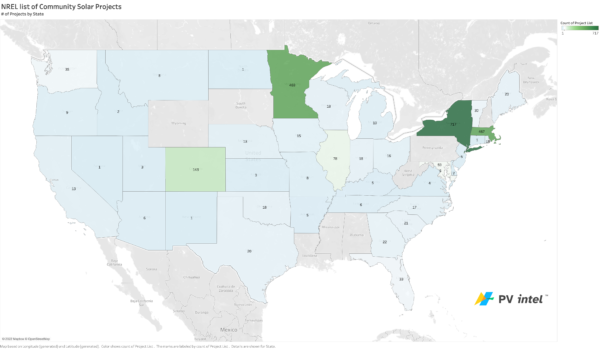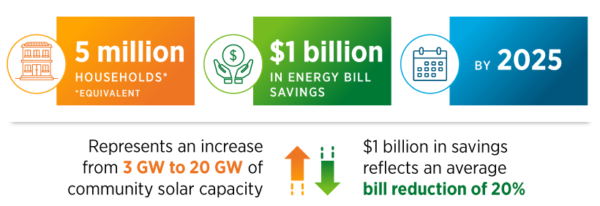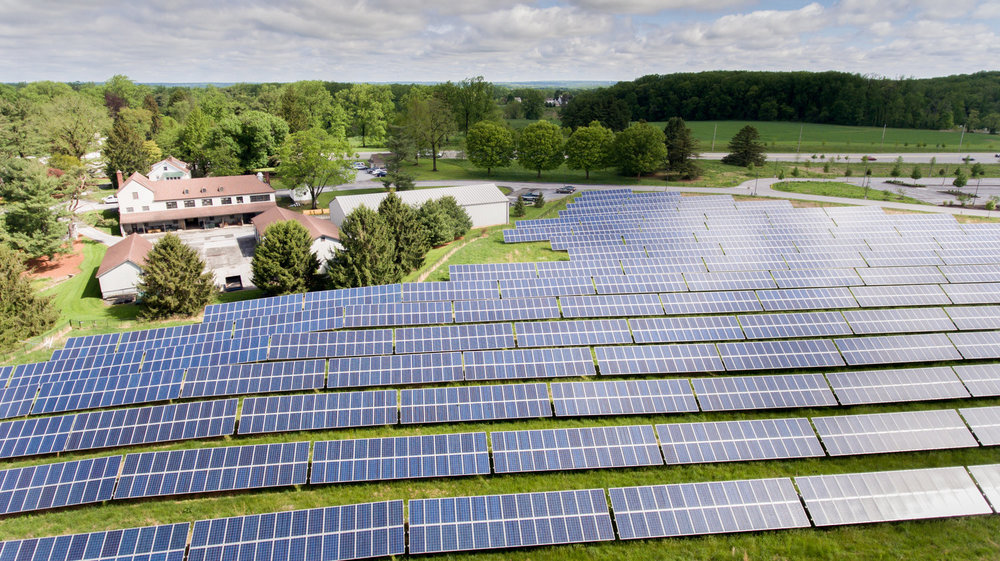Community solar, sometimes called shared solar, is pitched as a way for homeowners, businesses and other organizations like nonprofits to invest in the benefits of clean energy when they have unsuitable conditions for rooftop or on-site ground-mounted installations.
Either through buying or leasing a portion of an off-site solar project, customers typically receive a utility bill credit for the electricity generated by their share of the community solar system, similar to the way rooftop solar net billing works.
This class of solar projects is also hailed as an opportunity to ensure a more equitable energy transition. Residential rooftop solar has been historically adopted by higher-income customers, though that trend has been softening recently.
There are many reasons why one might invest in community solar instead of rooftop solar, including:
- Unsuitable space – too much shading or lack of solar irradiance, improper roof size, material, structure, or unsuitable ground-mount area
- Financial reasons – rooftop solar too large of an upfront investment, lack of credit score for no-upfront cost programs like power purchase agreements, lack of supportive incentives for rooftop solar
- Living situation – renters, or those in restrictive homeowner association areas (HOA)
Community solar differs from larger projects, often called utility-scale, which sell its power directly to the electric utility or to large corporate buyers.
The top three states projects for community solar in terms of project count are New York, Minnesota, and Massachusetts, each of which have diverse state incentive programs that have helped launch the market. The projects in these states average about 1.6 MW in capacity, according to a study by the National Renewable Energy Laboratory (NREL).

National Community Solar Partnership
The Department of Energy (DOE) is promoting the buildout of community solar through the National Community Solar Partnership (NCSP). NCSP, along with the Biden administration, set a goal to achieve the equivalent of 5 million households subscribed to community solar projects by 2025, leading to $1 billion in bill savings based on an assumption of a 20% bill discount.
The goal represents a 700% increase in total community solar deployment, growing from 3 GW in 2020 to 20 GW in 2025. NCSP works to achieve these goals through engaging stakeholders, providing technical assistance, and collaboration on addressing common development barriers through sharing resources and information.

A full list of NCSP and affiliate resources can be found here.
The NCSP is also working to meet the goals established in the Justice40 Initiative, which requires that 40% of overall benefits of targeted Federal investments flow to disadvantaged communities.
Justice40 primarily focuses on clean energy, energy efficiency, and Environmental Justice, and applies to over 145 DOE programs. Much of the $62 billion investment in DOE under the Bipartisan Infrastructure Law is allocated to Justice40. The initiative provides funding pathways for both non-competitive formula grants and competitive grant programs.
The Disadvantaged Communities Reporter is an interactive mapping tool that allows developers to identify which communities qualify as Disadvantaged Communities.
NCSP activities include:
- Developing programs that improve access to project capital;
- Deepening collaboration with state and local governments;
- Increasing the production, dissemination, and accessibility of resources and best practices;
- Improving NCSP communication materials, including updating the NCSP website, launching a project spotlight series, and holding targeted stakeholder convenings;
- Creating tools to improve customer acquisition;
- Expanding technical assistance opportunities; and
- Improving data collection and sharing across partners.
DOE and Solar Energy Technologies Office (SETO) is hosting the third NCSP Annual Summit on January 19, 2023, at the Bahia Resort Hotel in San Diego, California. There will also be a virtual option for attendees who cannot attend in person. A registration link is forthcoming, said DOE. Last year’s summit can be viewed in full here.
The summit will be co-located and hosted in coordination with the Coalition for Community Solar Access (CCSA) and RE+ Events Community Solar Power Summit. To learn more about the National Community Solar Partnership and its work with over 75 community-based organizations, one can join the Partnership or email community.solar@ee.doe.gov.
This article is the first in a series on the U.S. community solar market, with insights powered by PV Intel. Learn more about community solar development training opportunities here.
This content is protected by copyright and may not be reused. If you want to cooperate with us and would like to reuse some of our content, please contact: editors@pv-magazine.com.









By submitting this form you agree to pv magazine using your data for the purposes of publishing your comment.
Your personal data will only be disclosed or otherwise transmitted to third parties for the purposes of spam filtering or if this is necessary for technical maintenance of the website. Any other transfer to third parties will not take place unless this is justified on the basis of applicable data protection regulations or if pv magazine is legally obliged to do so.
You may revoke this consent at any time with effect for the future, in which case your personal data will be deleted immediately. Otherwise, your data will be deleted if pv magazine has processed your request or the purpose of data storage is fulfilled.
Further information on data privacy can be found in our Data Protection Policy.